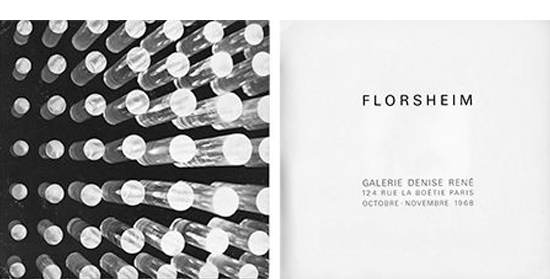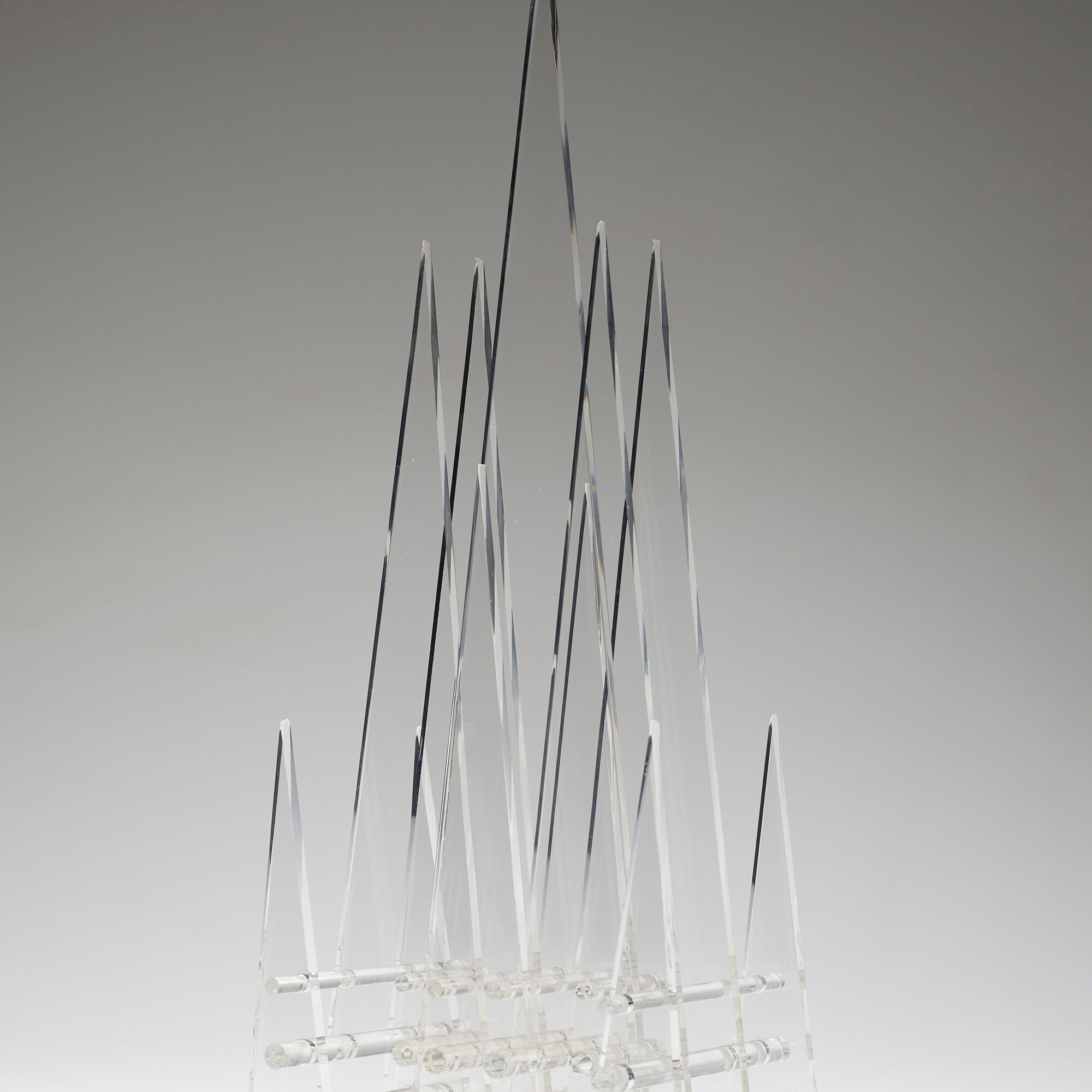128
128
c. 1958
Plexiglas 3¼ h × 7 w × 7 d in (8 × 18 × 18 cm)
Plexiglas 3¼ h × 7 w × 7 d in (8 × 18 × 18 cm)
estimate: $300–500
result: $845
follow artist
provenance: Collection of Lillian Florsheim | Thence by descent


Lillian’s artistic production took place late in her life; she began studying art in the late 1940s in her fifties and she continued to work until her eighties. She began with painting courses taught by Rudolph Weisenborn and George Buehle, both in Chicago. After viewing a work by Max Bill at the Art Institute of Chicago she became more interested in abstract work and enrolled in classes with Hugo Weber at the Institute of Design in 1951. Here she was introduced to more exploratory abstractions and three-dimensional studies, working with string and wire armatures, a technique derived from László Moholy-Nagy’s early teachings at the school.
Through the 1950s Lillian worked unaccompanied at home in her studio making abstracted figures, string study models, and a variety of utilitarian objects in Plexiglas. In the early 1960s, her sculptures became more abstract, complex studies of pure form. She began to layer Plexiglas, and then moved into strong geometric constructions of rods and planes. By the end of the decade, her works became much larger, first with tall columns and plinths and later with assemblies of tubes and portals. By the end of the 1970s, she returned to making smaller more intimately scaled works.

Over these three decades, she created an impressive body of work with more than 200 sculptures. She explored a variety of techniques, approaches, materials and methods throughout her career, probing the material and conceptual boundaries of her creations. Lillian’s sculptural work was widely exhibited from the mid-1960s through the 1980s; she had at least sixteen solo shows, and participated in twelve group shows in seven countries. She was a close friend of the highly-regarded Parisian gallerist Denise René, who showed Lillian’s work in 1968 and 1969. In 1970, Lillian was one of three artists in a major exhibition at the Museum of Contemporary Art, Chicago. She was represented by the notable Fairweather Hardin Gallery in Chicago, who hosted two solo shows of Lillian’s work in 1980 and 1983.


Lillian Florsheim 1896–1988
Lillian Florsheim came to the arts late in life. She began with painting in the 1940s, starting artistic work in her fifties. Her life up to then had been more conventional. She was born Lillian Hyman, in 1896 to parents Clara Newman and Harris Hyman. Raised in New Orleans in a large house on St. Charles Avenue in the Garden District, she summered with her family in Charlevoix, Michigan. The first woman in her family to go to college, Lillian was a strong student, and graduated from Smith College where she studied literature and philosophy. In 1918 she married Irving Florsheim of the prominent manufacturing company Florsheim Shoes, founded by his father. The young couple lived in Chicago and kept homes both in the city and outside in Libertyville. Lillian and Irving had two daughters, Mary and Nancy.
After twenty-eight years of marriage, in 1946, Lillian and Irving divorced and she would never remarry. It was at this time that Lillian began to pursue her interest in the arts. She took courses in painting with Rudolph Weisenborn and George Buehle, before studying sculpture under Hugo Weber at the Institute of Design in Chicago where she was introduced to more exploratory abstractions and three-dimensional studies. Throughout the 1950s Lillian dedicated herself to creating works that ranged from small abstract figures to string studies. In the late 1950s and early 1960s she moved to more abstract and complex studies of form and larger geometric constructions. From the mid-1960s through the early 1980s, Lillian’s art was widely exhibited locally as well as overseas in Europe. In 1970 she was one of three artists featured in solo exhibitions at the Museum of Contemporary Art, Chicago.
Not only did Lillian make art, but she also began to collect art in the late 1950s. She undertook this with serious investigation into the Cubists and other artists of the 1930s Paris-based group Abstraction-Création, and assembled a leading collection of their work. She traveled and met many of the artists whose works she collected, with particularly strong friendships with Georges Vantongerloo and Max Bill among others. Over the next two decades she would amass a well-considered and impressive collection which was shown in exhibitions around the world.
Her own work continued to evolve in scale and technique, reflecting changing ideas about art as she worked late into life, well into her eighties. Lillian died in 1988 at the age of 92. Today, works from her collection can be found in major museum collections including The Art Institute of Chicago, Hirshhorn, Smithsonian and the New Orleans Museum of Art, as well as in museums in Europe. Her work too has found homes in numerous prominent collections across the globe.
Auction Results Lillian Florsheim